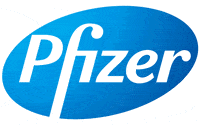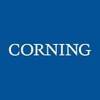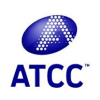Trend rate data is valuable for understanding current industry conditions, as well as for predicting future behavior within the cord blood industry.
In upcoming posts, we will be presenting a range of valuable trend rate data, pulled from diverse sources, including grant funding databases, patent databases, clinical trial databases, and more.
In this post, we will begin with an analysis of scientific publication rate data for cord blood industry, because it is an important way to gauge innovation and progress within the marketplace.
Scientific Publication Rate Analysis
PubMed is a service of the U.S. National Library of Medicine and the National Institutes of Health (NIH) that contains citations from MEDLINE and a diverse collection of other life science journals. The data below was generated using the PubMed database, because it is the largest, most comprehensive, and most up-to-date global meta-database available for scientific publications.[1]
It is also the most versatile tool for screening by multiple criteria.
For purposes of this analysis, the search term “Cord Blood” was used. It was chosen because it captures all longer-tail searches, including words like: “Umbilical Cord Blood,” “Cord Blood Banking,” “Cord Blood Transplant,” and more.
To compare growth rates for the related service of cord tissue storage, the search term “Cord Tissue” was also examined. Again, this phrase captures all longer-tail searches, including phrases such as: “Cord Tissue Stem Cells,” “Cord Tissue Banking,” and more. See data below.
TABLE. TREND RATE ANALYSIS FOR “CORD BLOOD” & “CORD TISSUE” SCIENTIFIC PUBLICATIONS, BY YEAR
* Note: For the “% Year-Over-Year Change” column, years with a positive change are in green
and years with a negative change as in red.
₸ The 2014 figures are full-year estimates based on PubMed data for January 1 – November 1, 2014.
Trend Rate Analysis
In the first graph below, you can see rates of scientific publications containing the term “Cord Blood” over a trailing 10-year period. The key finding is that a relatively predictable, linear increase in publications is observable over this period of time.
 Next, fitting an exponential best-fit line to this data set (R2 value of 0.9863[2]) , five-year projection data predicts that cord blood publications will reach nearly 1,600 per year by 2019. Note that an exponential best-fit line better describes this data set than a linear, logarithmic, power, polynomial, or moving average best-fit line.
Next, fitting an exponential best-fit line to this data set (R2 value of 0.9863[2]) , five-year projection data predicts that cord blood publications will reach nearly 1,600 per year by 2019. Note that an exponential best-fit line better describes this data set than a linear, logarithmic, power, polynomial, or moving average best-fit line.
See five-year future projection data below.
In the next graph, the same trailing 10-year historical analysis is completed for scientific publications containing the term “Cord Tissue.”
Unfortunately, a best-fit line does not fit well for this “Cord Tissue” data set. Indeed, an exponential best-fit line, which is more accurate than a linear, logarithmic, power, polynomial, or moving average best-fit line for this data set, provides only an R2 value of 0.7307.[3]
If one chooses to ignore the poor fit of this trend line and extrapolate for purposes of creating five-year projection data, then it predicts that cord tissue publications will reach approximately 125 per year by 2019. However, actual numbers could vary substantially from this prediction, given the described limitation of this best-fit line and the smaller quantities involved within this data set.
See five-year future projection data below.
Summary
In summary, there have been consistent linear increases in scientific publications containing the term “Cord Blood” for the past 10 years. While past behavior is not a guarantee of future behavior, this consistent trend suggests that accurate future predictions may be possible.
However, there have been less consistent trends observable for scientific publications containing the term “Cord Tissue.” As such, it is much more difficult to make accurate predictions in this area of stem cell medicine.
Future Posts about Cord Blood
To receive future posts cord blood, sign-up below. We will never share your information with anyone, and you can opt-out at any time.
Footnotes:
[1] Ncbi.nlm.nih.gov, (2014). Home – PubMed – NCBI. [online] Available at: http://www.ncbi.nlm.nih.gov/pubmed [Accessed 6 Nov. 2014].
[2]R² is a statistical term describing how good one term is at predicting another. If R² is 1.0 then given the value of one term, you can perfectly predict the value of another term. . If R² is 0.0, then knowing one term does not help you know the other term at all.
[3] Ibid.
About Us
BioInformant is the only research firm that has served the cord blood sector since it emerged. Our management team comes from a BioInformatics background – the science of collecting and analyzing complex genetic codes – and applies these techniques to the field of market research. BioInformant has been featured on prominent news outlets including the Wall Street Journal, Nature Biotechnology, Medical Ethics, CBS News, and the California Institute for Regenerative Medicine (CIRM).
Serving Fortune 500 leaders that include GE Healthcare, Pfizer, Goldman Sachs, Beckton Dickinson, and Thermo Fisher Scientific, BioInformant is your global leader in cord blood industry data.
To learn more about emerging trends and opportunities within the cord blood banking industry, view the “Complete 2015-16 Global Cord Blood Banking Industry Report” now.


























Tell Us What You Think!